-
×
 Daryl Rosser – Immersion by Lion Zeal
1 × $80
Daryl Rosser – Immersion by Lion Zeal
1 × $80 -
×
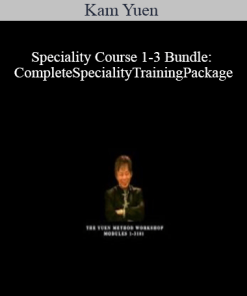 Kam Yuen - Speciality Course 1-3 Bundle: Complete Speciality Training Package
1 × $92
Kam Yuen - Speciality Course 1-3 Bundle: Complete Speciality Training Package
1 × $92 -
×
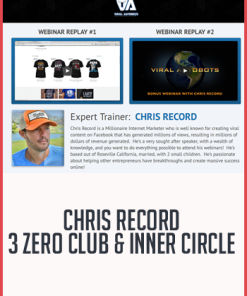 Chris Record – 3 Zero Club & Inner Circle
1 × $68
Chris Record – 3 Zero Club & Inner Circle
1 × $68 -
×
 Lewis Howes – Profitable Online Course
1 × $67
Lewis Howes – Profitable Online Course
1 × $67 -
×
 Pricing Copy Projects AWAI’s Simplest Guide to Pricing Copy Projects by AWAI
1 × $57
Pricing Copy Projects AWAI’s Simplest Guide to Pricing Copy Projects by AWAI
1 × $57 -
×
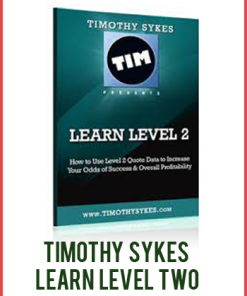 Timothy Sykes- Learn Level Two
1 × $35
Timothy Sykes- Learn Level Two
1 × $35 -
×
 Jennifer Sheahan – FB Ads Lab
1 × $20
Jennifer Sheahan – FB Ads Lab
1 × $20 -
×
 Peter Sandeen – Targeted Marketing Message
1 × $45
Peter Sandeen – Targeted Marketing Message
1 × $45 -
×
 Making the leap: A Practical hands-On Guide to Getting from Wherever You Are by AWAI
1 × $37
Making the leap: A Practical hands-On Guide to Getting from Wherever You Are by AWAI
1 × $37 -
×
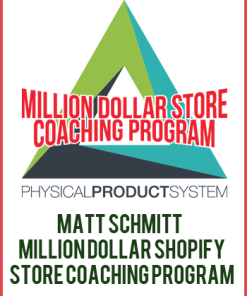 Matt Schmitt – Million Dollar Shopify Store Coaching Program
1 × $85
Matt Schmitt – Million Dollar Shopify Store Coaching Program
1 × $85 -
×
 Vanessa Van Edwards – Ziva Mind Meditation
1 × $52
Vanessa Van Edwards – Ziva Mind Meditation
1 × $52 -
×
 The Legalities of Copywriting Made Simple by AWAI
1 × $47
The Legalities of Copywriting Made Simple by AWAI
1 × $47 -
×
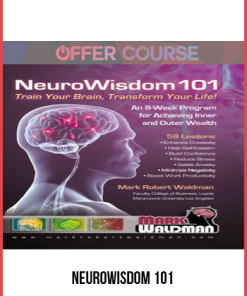 NeuroWisdom 101
1 × $29
NeuroWisdom 101
1 × $29
Chanchal Cabrera – Growing Your Own Herbal Medicine
$297
Delivery Method: Digital download is available after purchase, and you can access your courses anytime, anywhere, using a computer, tablet, or smartphone.

Chanchal Cabrera – Growing Your Own Herbal Medicine
What You’ll Discover in These 7 Modules
In this 7-module transformational intensive, Chanchal will guide you through the fundamental skills and competencies you’ll need to successfully grow your own herbal pharmacy.
Each training session will build harmoniously upon the previous ones so you’ll develop a complete holistic understanding of the practices, tools, and principles you’ll need to use horticulture therapy to grow, harvest, process, and store herbal medicines.
The teachings in this course are fully pre-recorded to offer you the full range of not only Chanchal’s teachings, but on-location footage from her incredible Botanic Garden and healing farm.
Module 1: The Science and Art of Herbal Healing
Discovering and Deepening Your Intimate Relationship with Plants Through Plant Attunement

Connecting deeply with these living, growing “beings,” including the soil, offers you an opportunity to not only better understand a plant’s healing qualities and growing requirements, it can nurture your mind, body, soul, and Mother Earth. When you’re attuned to a plant’s essence or “spirit,” you’re awakened to how its energies and life cycles synergize with yours.
Chanchal will open this session with a 15-minute practice designed to help you deepen your relationship with plants — whether you’re out in your garden or at your kitchen table with a potted plant. This practice will help you communicate with plants and tune in to hear what they have to teach us.
This module will be filmed outside on Chanchal’s farm to create an intimate and immersive experience. Come with paper and pen, pencil, or crayons because drawing the essence of the plant of your choice will be part of the practice.
In this module, you’ll discover:
- Why subjective study is as important and as useful as objective study
- How to see past the science to the essence of the plant
- Techniques for practicing plant attunement meditation
- How to use expressive art practices to tap into the meaning of the plant meditation
- The 7-stage process for interpreting the gesture of a plant
- How to build a deeper relationship to plants and to translate that into healing practices and herbal medicine
Module 2: Medicines From the Garden
Common Garden Plants Used for Health & Healing

Many plants we commonly grow in the flower garden or vegetable garden can be used for health and healing. Some are for quick-fix acute care while others serve as tonics or normalizers. Some may generally be considered foods, but the dividing line between food and medicine is mostly just about intention and dose or dosage form. Herbalists use rosemary, sage, roses, peonies, garlic, and honeysuckle as medicines as well as enjoying them in the garden and the kitchen.
In this engaging walk through the gardens at Innisfree Farm, we’ll explore numerous herbs, vegetables, and flowers, exploring their identifying features, uses, and actions.
We’ll discuss applications, doses, and safety.
In this module, you’ll discover:
- How to identify some common garden plants and herbs
- Key actions and medicinal uses of at least 5 garden plants
- Key actions and medicinal uses of at least 3 vegetables
Module 3: Harvesting, Drying, Processing & Storing Herbs
How to Handle & Manage Herbs for Optimal Quality and Potency

Knowing when and how to harvest herbal medicines is critical to making good remedies and getting good results with your herbs. In this practical class session, we’ll demonstrate and discuss the times and techniques for harvesting leaves, flowers, seeds, barks, and roots.
This class will be held partly outdoors — you’ll join Chanchal in her gardens and in the nearby forests to see the herbs growing there and witness the proper techniques of harvesting.
Drying herbs properly is also critical to making a good medicine, so we’ll discuss how to do this at home, as well as how to process and properly store the herbs. We’ll also consider sustainability and ecology, best tools, drier boxes, and more.
In this module, you’ll discover:
- Practical, take-home skills for harvesting leaves, roots, barks, and flowers
- How to clean, strip, and process herbs
- How to dry herbs for preservation of active constituents
- Techniques and methods for best results
- Methods for storing and keeping your herbs
- Rules and regulations in the marketplace
Modules 4-5: Setting Up & Managing Your Herbal Dispensary
Quality Control & Good Manufacturing Practices for Herbalists

From personal dispensary to full-scale factory, there are numerous principles and practices that ensure safety, accuracy, and accountability in herbal medicine. They’re the least a consumer expects of anyone making medicines, whether on a large commercial scale or just you taking items to the local farmers market; and they’re mostly also required by law. Even if you only ever make products for your own home use with friends and family, you still want to be assured of consistency, quality, and purity.
This extensive review of herbal dispensary guidelines — which are mostly common sense and often scaled up from simple kitchen health and safety guidelines — will show you all the tricks of the trade that a professional herbalist exercises to make the best possible remedies. With charts and tables, and fully referenced, it will give the budding herbalist the tool kit required to make medicines and manage a home dispensary.
Via video, you’ll join Chanchal in the dispensary attached to her clinical practice — the place where she compounds and formulates medicines for individual patients. You’ll see her working documents for tracking the quality and purity of incoming herbs and outgoing herbal products. Chanchal will guide you in field and farming practices, harvesting and processing practices, how and where adulteration or contamination can occur and how to recognize it, hazard mitigation, traceability and transparency, and regulations and requirements of law. In a practical session between these two modules, students will learn to apply organoleptic skills to raw herbs.
In these modules, you’ll discover:
- Why quality control and good manufacturing practices matter no matter what scale you operate at
- Methods and tools for safety, quality assurance, and traceability in making herbal medicines
- How to use organoleptic assessment (the senses) for quality control of personal herb purchases
- Hazard Analysis Critical Control Points
- How to use a hand lens to look for herb quality
- How to read Certificates of Analysis and Certificates of Good Agricultural Practices
Module 6: Sacred & Medicinal Trees
Ancient Medicines for Modern Times

Dozens of trees are regularly used by herbalists around the world — willow, oak, walnut, hawthorn, ginkgo, to name just a few. All over the world, trees and tree products yield medicines for us to use, both herbal remedies and pharmaceuticals. Many parts of trees can produce medicines — leaves like ginkgo and willow, root barks like sassafras, inner bark of the trunk like oak and alder, flowers like linden, berries like hawthorn, and even nuts like walnut and horse chestnut. Trees are also sacred medicines or can be used in rituals (e.g., sandalwood, palo santo, and cedar).
This class will be held as a “herbal walk” though Innisfree Farm to look at trees growing in the Botanic Garden grounds. The grounds are a green oasis, a tranquil haven with a unique collection of trees. Meeting sweet gum, hawthorn, fringe tree, cedar, yew, rowan, willow, and more, we’ll explore the many ways that trees can help us.
In this module, you’ll discover:
- Why trees are critical to ecosystems and to planetary and human health
- How to use a range of local and indigenous trees as well as foreign and exotic trees for health and healing
- An appreciation for some mythologies and folklore built up around certain trees
Module 7: Wild Weeds & Native Plants as Medicines
The Medicines Under Your Feet

People today do most of their traveling sealed up tight in little metal boxes on wheels, whizzing along at considerable speed, divorced from the landscape and seeing plants as nothing more than a blur of green. This is a great shame, given that plants offer us a great wealth of food and medicine if you know what to look for. On this woodland walk, we’ll discuss guidelines for safe harvesting and the safe use of weeds found all around us.
In this module, you’ll discover:
- How to identify common weeds as well as wild herbs and trees
- How to key out a plant in an identification plant guide book
- Key actions and medicinal uses of wild plants, including black cottonwood, balsam poplar, blackberry, bleeding heart, burdock, elderberry, horsetail, plantain, salmon berry, St. John’s wort , Western red cedar, willow, yarrow, and yellow dock
The Growing Your Own Herbal Medicine Bonus Collection
In addition to Chanchal’s transformative 7-module virtual course, you’ll receive these powerful training sessions with leading visionaries and teachers. These bonus sessions complement the course and promise to take your understanding and practice to an even deeper level.
Growing Your Own Herbal Medicine: A Self-care Home Herbal First Aid Kit in Your Garden
Audio Dialogue With Chanchal Cabrera and David Crow

Join Chanchal Cabrera, medical herbalist, master gardener, and horticulture therapist, as she shares her wisdom on how to take control of your own health by growing the herbs you need. She shows you how to grow a personalized herb garden — including building the soil and choosing the plants. She offers advice about the size and color of plants that are most suited to your needs and the seasons, describing which plants to grow for health conditions such as immune disorders, sleep challenges, and digestion issues. And she discusses techniques for harvesting your herbs and keeping them safe.
Fibromyalgia: A Journey Toward Healing
Video Teaching From Chanchal Cabrera

Fibromyalgia: A Journey Toward Healing offers hope and help to the 6 million+ Americans who suffer from this condition. With its holistic approach, it shows how you can achieve lasting wellness and healing through changes in diet and lifestyle and by using herbs. Numerous self-help remedies as well as advice on exercise, physical therapy, and aromatherapy are presented. As Chanchal tells the story of her own struggles with the condition, she shares practical strategies for healing and being well.
Culinary Herbs as Medicines
Video Teaching From Chanchal Cabrera

From sage for sore throats to mint for indigestion and thyme for infections, horseradish for cold feet and rosemary for poor memory, the kitchen garden can be a great resource of potent remedies. Walking through the culinary herb garden and the vegetable garden at Innisfree, we’ll explore a range of edible plants that are also medicines.
Be the first to review “Chanchal Cabrera – Growing Your Own Herbal Medicine” Cancel reply
Related products
Sale!
Hypnosis & NLP
Rated 3.8 out of 5
Sale!
Hypnosis & NLP
Rated 3.03 out of 5
Sale!
Hypnosis & NLP
Rated 4.22 out of 5
Sale!
Hypnosis & NLP
Sale!
Hypnosis & NLP
Rated 4.02 out of 5
Sale!
Hypnosis & NLP
Sale!
Hypnosis & NLP
Rated 5 out of 5
Sale!
Hypnosis & NLP
Rated 3.45 out of 5



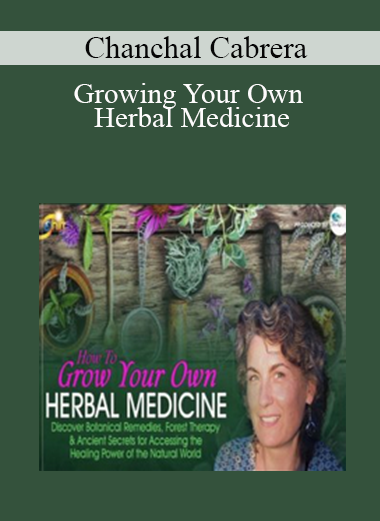

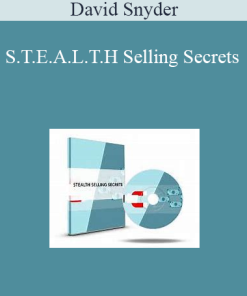
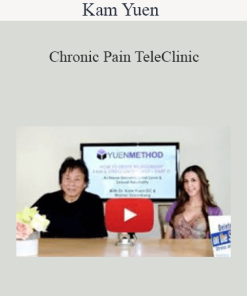





20 reviews for Chanchal Cabrera – Growing Your Own Herbal Medicine
There are no reviews yet.